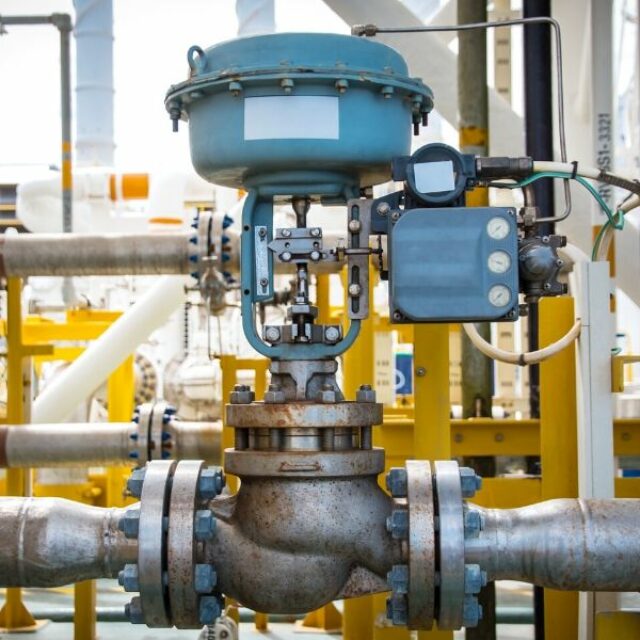Selecting the Right Control Valves: An Overview to Ideal System Efficiency
Selecting the Right Control Valves: An Overview to Ideal System Efficiency
Blog Article

Maximize Power Financial Savings and Convenience With Advanced Structure Automation Controls
In the world of modern design and center management, the assimilation of sophisticated structure automation controls stands as an essential development. By taking advantage of the power of automation, buildings can adjust, react, and develop in methods that were as soon as unimaginable.
Energy Performance Conveniences
Energy performance benefits can dramatically decrease energy usage and operational prices in structures. By executing energy-efficient methods and innovations, building owners and operators can accomplish significant financial savings while likewise adding to ecological sustainability. One of the primary advantages of enhancing energy efficiency in structures is the decrease of energy costs. Energy-efficient systems, such as advanced building automation controls, can maximize making use of sources like air conditioning, lighting, and heating, leading to lower energy costs in time.
Furthermore, enhanced energy performance can lengthen the life-span of building equipment and systems. By operating a lot more efficiently, heating and cooling systems, lighting fixtures, and other building components experience less deterioration, causing lowered upkeep and substitute costs. Additionally, energy-efficient structures typically command higher home worths and rental rates, giving long-lasting financial advantages to owners.
In addition, power effectiveness can boost resident convenience and performance. Effectively managed interior atmospheres with optimum lights and thermal conditions develop a more pleasurable and conducive work area, bring about improved worker complete satisfaction and efficiency. In general, the power efficiency advantages related to sophisticated structure automation controls are diverse, including price savings, ecological stewardship, and occupant well-being.
Improved Convenience Control
Enhancing comfort control in building settings needs an advanced combination of advanced automation systems for optimal occupant well-being. By making use of innovative structure automation controls, facilities can customize the interior environment to satisfy the particular needs and choices of occupants. control valves.
Improved comfort control surpasses basic temperature level changes. It includes functions such as personalized settings, tenancy sensing units, and natural light use to develop a receptive and dynamic atmosphere. By including these innovative controls, structures can not just enhance convenience but likewise improve power performance by enhancing system operations based on real tenancy and usage patterns. Ultimately, prioritizing occupant comfort via sophisticated automation systems leads to a more delightful and healthier indoor atmosphere.
Operational Efficiency Improvements

Furthermore, the application of real-time surveillance and analytics devices enables building drivers to recognize power inadequacies and operational anomalies promptly. By continuously keeping an eye on power learn the facts here now usage patterns and system performance metrics, adjustments can be made in real-time to enhance power usage and make sure peak functional effectiveness. control valves. In addition, including demand reaction methods into structure automation controls can additionally boost functional effectiveness by dynamically readjusting power use based on grid problems and prices signals
Indoor Climate Optimization
Efficient interior environment optimization is an essential facet of structure automation controls, making certain owners' convenience and wellness while taking full advantage of energy cost savings. By making use of advanced sensing units and controls, building automation systems can continuously change and keep track of temperature level, moisture levels, air quality, and air flow to develop an ideal indoor setting. Preserving consistent and comfortable conditions not just boosts owner satisfaction however likewise improves productivity and general well-being.
Interior climate optimization also plays an essential duty in power performance. By fine-tuning heating, ventilation, and air conditioning systems based upon real-time information and occupancy patterns, building automation controls can considerably minimize energy consumption - control valves. Implementing approaches such as demand-controlled ventilation and thermal zoning can aid reduce power waste while making certain that each location of the building gets the necessary conditioning.

Sustainable Environment Creation
Structure automation regulates not just maximize interior climate conditions for power performance and occupant convenience yet additionally lay the structure for producing a sustainable environment through strategic monitoring of systems and resources. By integrating advanced structure automation modern technologies, such as sensing units, actuators, and intelligent software, centers can readjust and check energy usage in real-time to decrease waste and minimize their carbon impact. These systems allow predictive upkeep, determining potential concerns before they intensify and optimizing tools performance to enhance long life and effectiveness.
Additionally, sustainable setting development expands past energy administration to include water conservation, waste decrease, and indoor air top quality enhancement. Structure automation controls can control water usage, detect leakages, and ensure correct waste disposal methods, adding to overall sustainability efforts. Additionally, by keeping track of and controlling air flow and filtering systems, these modern technologies enhance passenger wellness and efficiency while lowering power consumption connected with HVAC operations.
Verdict
In conclusion, progressed structure automation controls deal considerable advantages in terms of energy cost savings, convenience control, functional efficiency, indoor environment optimization, and developing a sustainable environment. By carrying out these controls, structures can attain optimum performance while decreasing energy usage and boosting resident convenience. It is evident that the use of sophisticated automation innovation is critical in enhancing structure efficiency and developing an extra lasting future.
Power performance advantages can dramatically reduce energy consumption and operational costs in structures. Overall, the energy efficiency benefits associated with advanced building automation controls are multifaceted, including expense financial savings, environmental stewardship, and passenger wellness.
In addition, including demand reaction strategies right into structure automation controls can further enhance functional effectiveness by dynamically adjusting power usage based on grid conditions and pricing signals.
Building automation find more regulates not only maximize interior climate problems for power effectiveness and occupant convenience however additionally lay the structure for creating a sustainable setting with strategic monitoring of resources and systems.In final thought, progressed building automation regulates offer considerable benefits in terms of power financial savings, comfort control, functional effectiveness, interior climate optimization, and developing a sustainable atmosphere.
Report this page